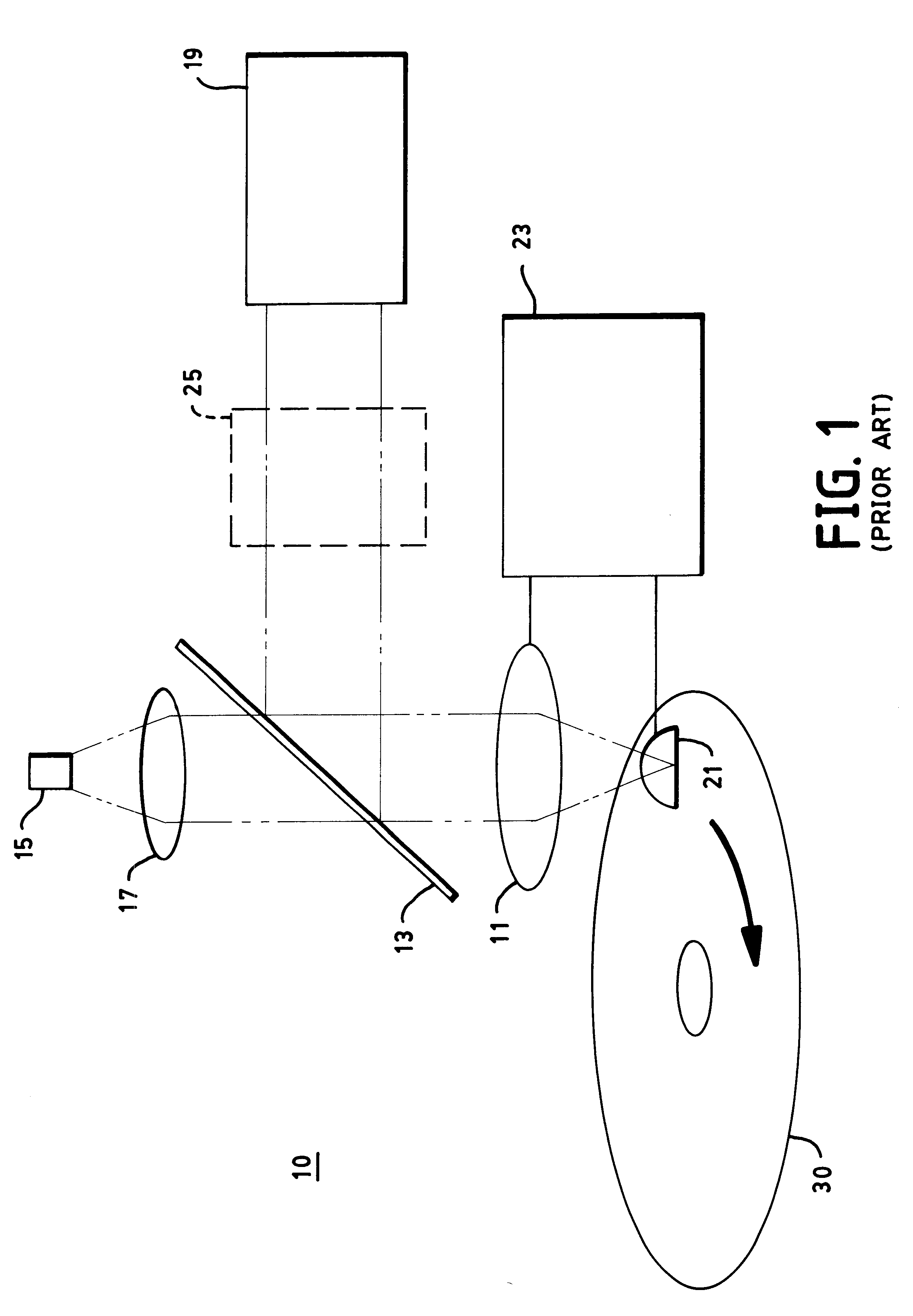Data storage system and methods using diffractive near-field optics
- Summary
- Abstract
- Description
- Claims
- Application Information
AI Technical Summary
Benefits of technology
Problems solved by technology
Method used
Image
Examples
Embodiment Construction
There is shown in FIGS. 3 and 4 a first embodiment of an optical system 60 in accordance with the present invention. Optical system 60 comprises objective lens 41 and diffractive near-field optical element 63 (shown here in cross-sectional profile). Diffractive near-field optical element 63 is typically part of a "flying optical head" assembly, as well known in the relevant art. Diffractive near-field optical element 63 comprises a diffractive surface 66 in the form of Fresnel zone plates. The optical geometry of diffractive surface 66 is such that diffractive near-field optical element 63 is the optical equivalent of an aplanatic sphere. Diffractive near-field optical element 63 has a focal point at an internal total reflection surface 65. Diffractive surface 66 directs illumination 45 to internal total reflection surface 65 at beyond the critical angle, thereby forming an evanescent or near-field at surface 65. Diffractive surface 66 may have circular symmetry, as best seen in FIG...
PUM
 Login to View More
Login to View More Abstract
Description
Claims
Application Information
 Login to View More
Login to View More - R&D
- Intellectual Property
- Life Sciences
- Materials
- Tech Scout
- Unparalleled Data Quality
- Higher Quality Content
- 60% Fewer Hallucinations
Browse by: Latest US Patents, China's latest patents, Technical Efficacy Thesaurus, Application Domain, Technology Topic, Popular Technical Reports.
© 2025 PatSnap. All rights reserved.Legal|Privacy policy|Modern Slavery Act Transparency Statement|Sitemap|About US| Contact US: help@patsnap.com



